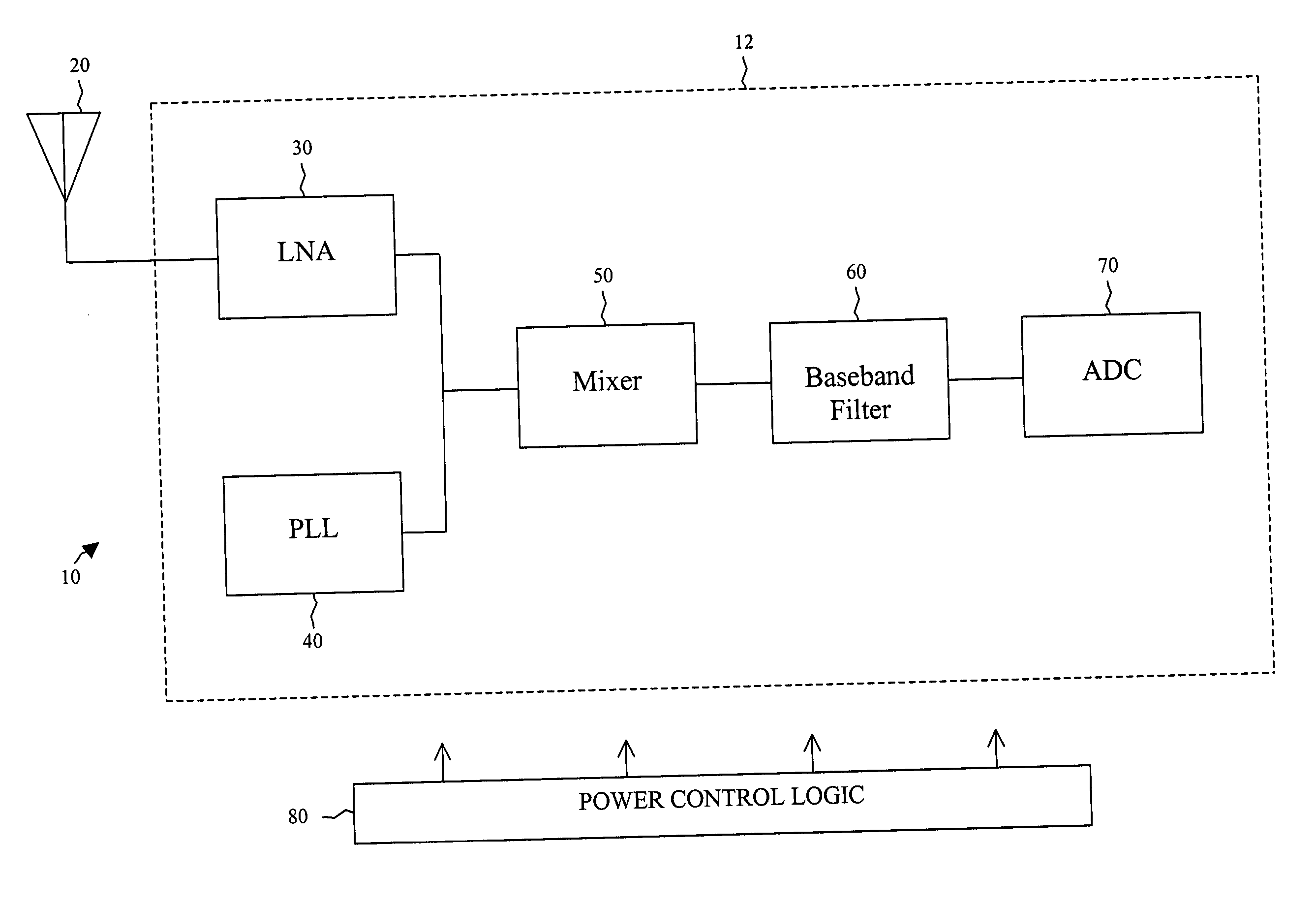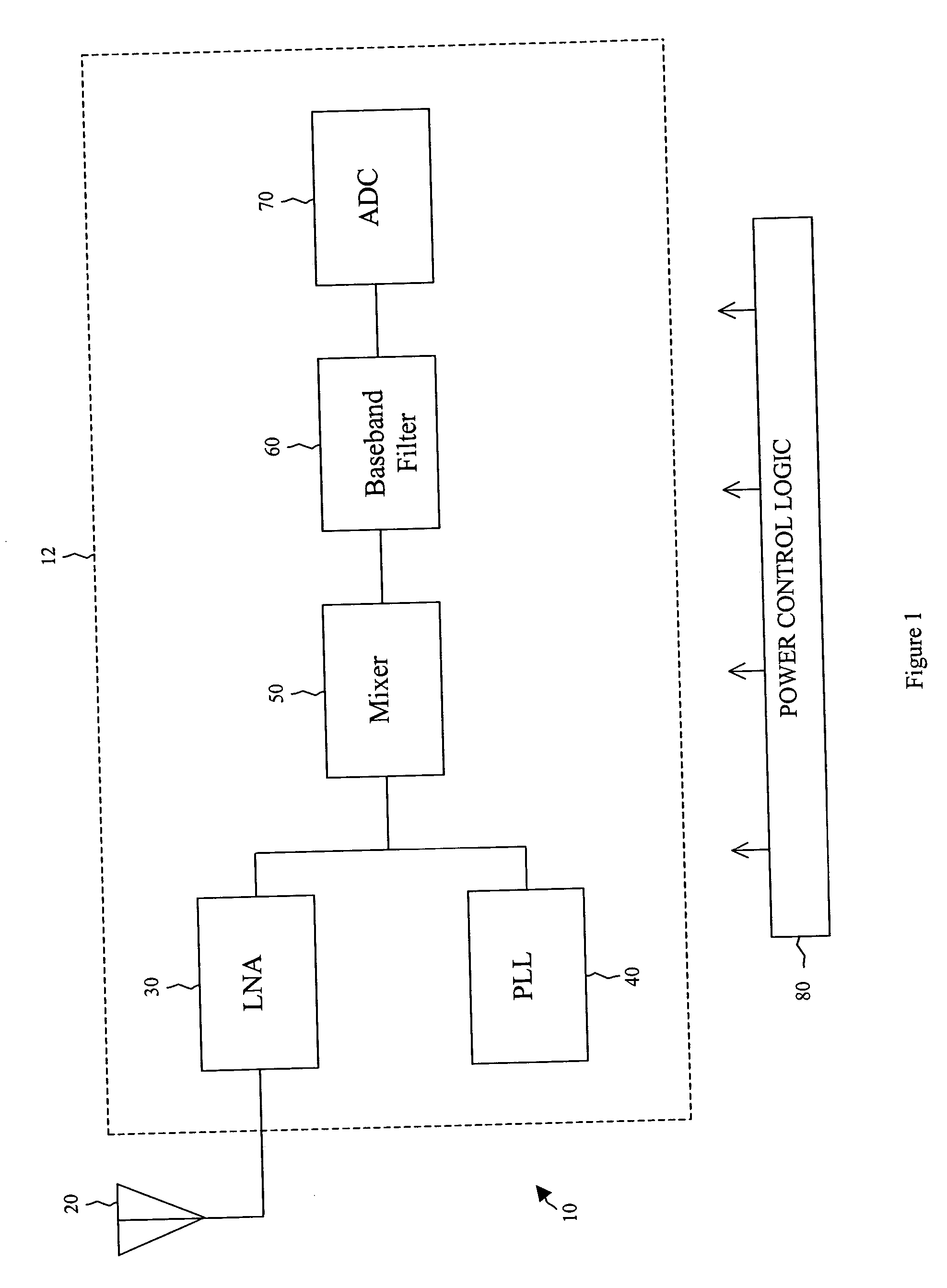Bi-modal RF architecture for low power devices
- Summary
- Abstract
- Description
- Claims
- Application Information
AI Technical Summary
Benefits of technology
Problems solved by technology
Method used
Image
Examples
Embodiment Construction
[0016] It should be understood at the outset that although an exemplary implementation of one embodiment is illustrated below, the present system may be implemented using any number of techniques, whether currently known or in existence. The present disclosure should in no way be limited to the exemplary implementations, drawings, and techniques illustrated below, including the exemplary design and implementation illustrated and described herein, but may be modified within the scope of the appended claims along with their full scope of equivalents.
[0017] In various embodiments, systems and methods are provided that decrease the amount of power consumed by a radio frequency (RF) signal reception device. In an embodiment, the device is used in a network compliant with the IEEE 802.11 standard for wireless networking. Several of the components in the architecture of an RF reception device are adapted to operate in a bi-modal fashion. Based on data rate, signal strength, noise, the lev...
PUM
 Login to view more
Login to view more Abstract
Description
Claims
Application Information
 Login to view more
Login to view more - R&D Engineer
- R&D Manager
- IP Professional
- Industry Leading Data Capabilities
- Powerful AI technology
- Patent DNA Extraction
Browse by: Latest US Patents, China's latest patents, Technical Efficacy Thesaurus, Application Domain, Technology Topic.
© 2024 PatSnap. All rights reserved.Legal|Privacy policy|Modern Slavery Act Transparency Statement|Sitemap



